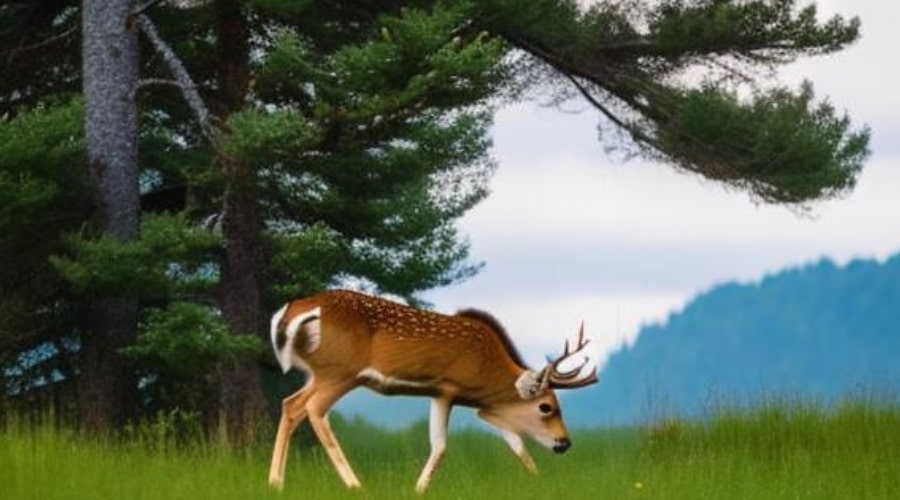Deer are elegant and gentle creatures that have captivated the hearts of many. Despite their serene beauty, these creatures face numerous threats in their natural habitats. This article will discuss the primary enemies of deer, their survival strategies, and the impact these interactions have on the ecosystem. We will also address frequently asked questions to provide a comprehensive understanding.
The Main Predators of Deer

Wolves
Wolves are among the most formidable predators of deer. These canines rely on their strong pack structure, exceptional stamina, and keen sense of smell to track and bring down their prey. Deer, particularly fawns, are a crucial food source for wolves, providing them with the energy they need to survive in their often harsh environments.
Mountain Lions (Cougars)
Mountain lions, also known as cougars, are skilled ambush predators. They use stealth and power to their advantage, stalking their prey before launching a surprise attack. These big cats prefer to prey on deer, as they provide an ample source of nutrition.
Coyotes
While coyotes are smaller than wolves and mountain lions, they are still a significant threat to deer populations. Coyotes are opportunistic hunters and will prey on fawns or injured adult deer. They are known for their adaptability and intelligence, making them efficient predators.
Bears
Though bears are omnivorous, some species, such as the grizzly bear, occasionally prey on deer. Bears target fawns or weak adult deer, capitalizing on their vulnerability.
Humans
Humans are also considered enemies of deer, primarily due to hunting activities. While hunting is often regulated to maintain balance in deer populations, it can sometimes result in overhunting, leading to declining deer numbers.
Deer Survival Strategies

Speed and Agility
One of the primary defenses deer possess is their remarkable speed and agility. Deers can quickly sprint and leap to evade their predators when faced with a threat. Their slender bodies and long legs allow them to cover great distances quickly.
Camouflage
Deer have adapted to blend into their surroundings effectively. Their coats often match the colors and patterns of their habitats, making them difficult for predators to spot.
Herd Behavior
Deer often live in groups known as herds, which provides them with additional protection. Herd behavior allows deer to keep an eye out for threats and helps them respond more effectively to danger by relying on the “safety in numbers” strategy.
Vigilance and Alertness
Deer have keen senses and are constantly vigilant. Their large ears can detect the slightest sounds, and their wide-set eyes give them a broad field of vision. This heightened awareness allows deer to detect and react quickly to potential threats.
FAQs
Q: Do deer have any natural defenses against predators?
A: Deer have several natural defenses, including their speed and agility, camouflage, herd behavior, and heightened senses. These adaptations help them evade and escape predators.
Q: How do deer populations affect their predators?
A: Deer populations can directly impact the populations of their predators. Predator populations may also increase when deer numbers are high due to the ample food supply. Conversely, a decline in deer populations can lead to decreased predator numbers.
Q: Are there any non-predatory threats to deer?
A: Yes, deer face several non-predatory threats, including habitat loss, disease, starvation, and vehicle collisions. These factors can significantly impact deer populations.
Q: Can the presence of predators be beneficial for deer populations?
A: Yes, predators can play a crucial role in maintaining the balance of an ecosystem. Predators help control deer populations by preying on deer, ensuring that resources such as food and habitat remain available. This balance is important for maintaining the overall health of the ecosystem and preventing overpopulation or resource depletion.
Q: How do predators affect the behavior of deer?
A: The presence of predators can influence the behavior of deer in various ways. Deer may alter their movement patterns, foraging habits, and social behavior in response to predator presence. For example, they may avoid areas where predators are known to be active or spend more time in groups to minimize the risk of being targeted.
Conclusion
Understanding the complex relationship between deer and their predators is essential for maintaining the balance of the ecosystem. Predators play a crucial role in regulating deer populations, and deer, in turn, provide a valuable food source for these predators.
Human activity can significantly impact this delicate balance, and it is crucial for conservation efforts to address both deer and their predators to maintain a healthy ecosystem. Through knowledge and awareness, we can work together to ensure the survival and well-being of these fascinating creatures and their natural habitats.





Leave a Reply